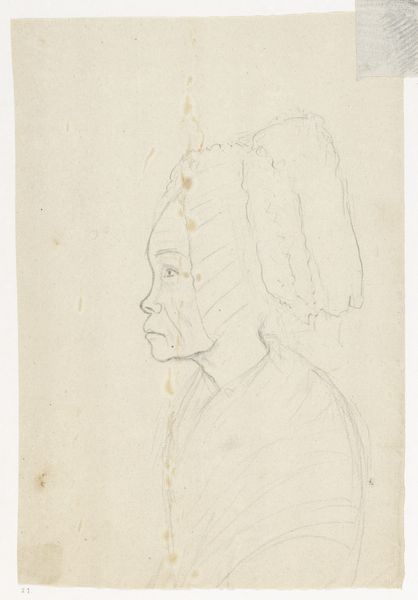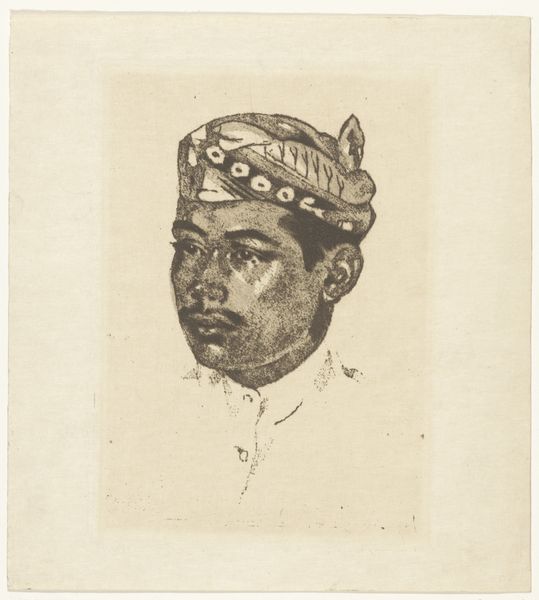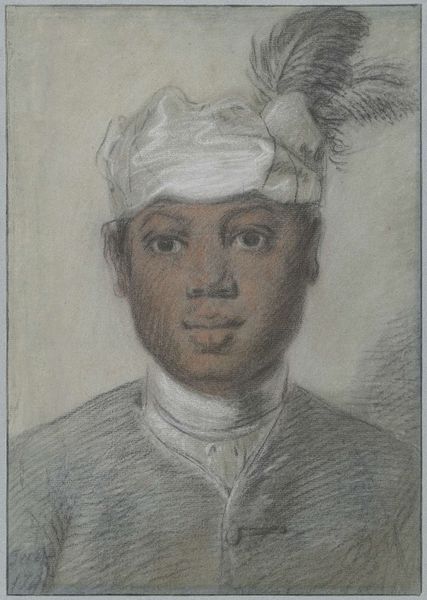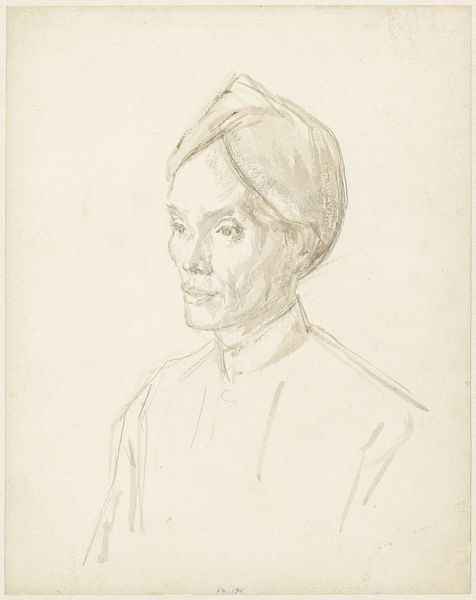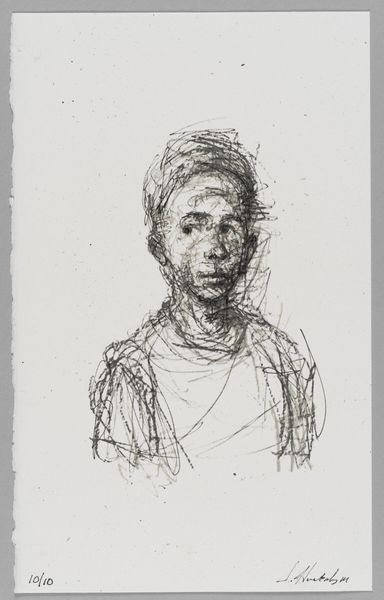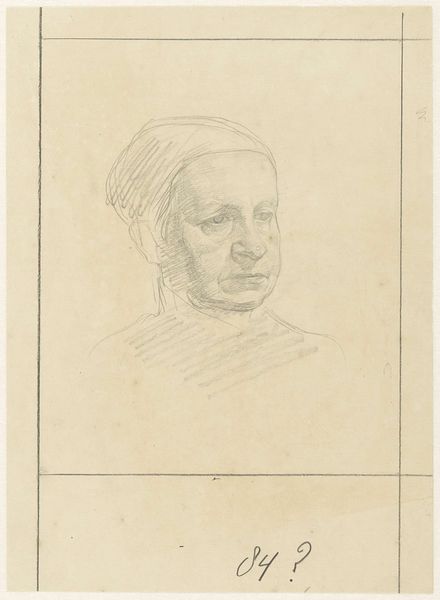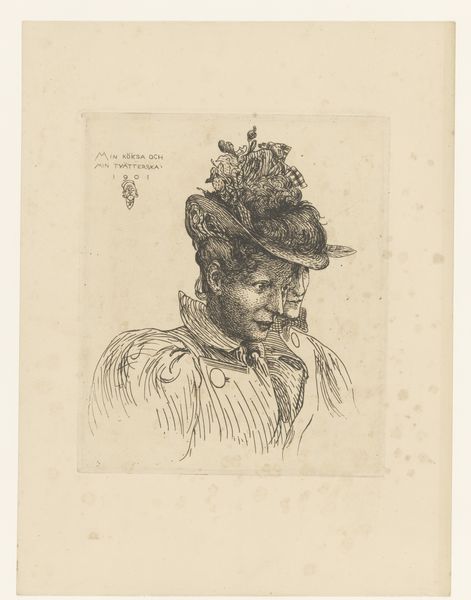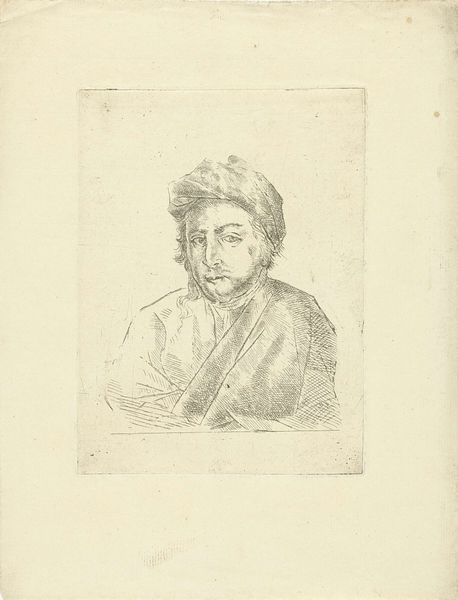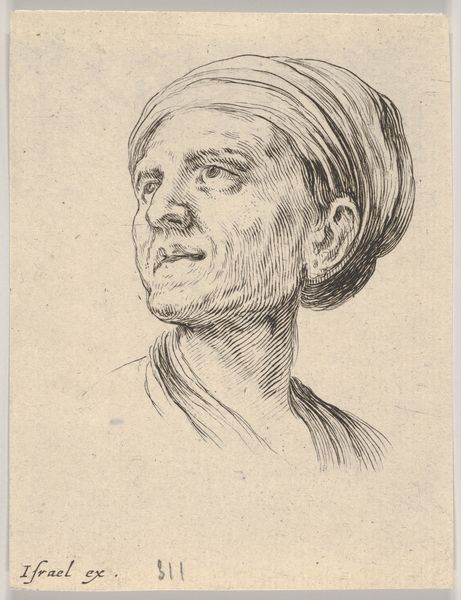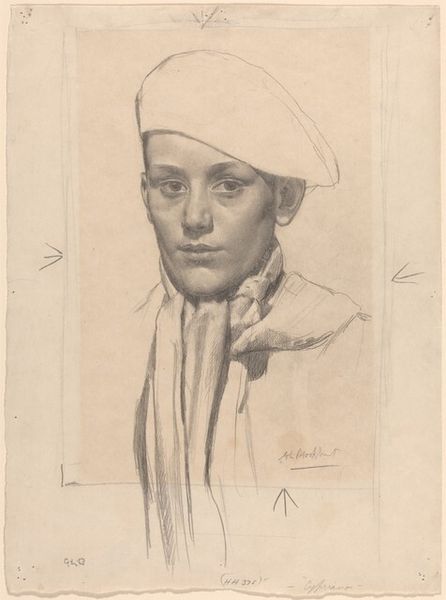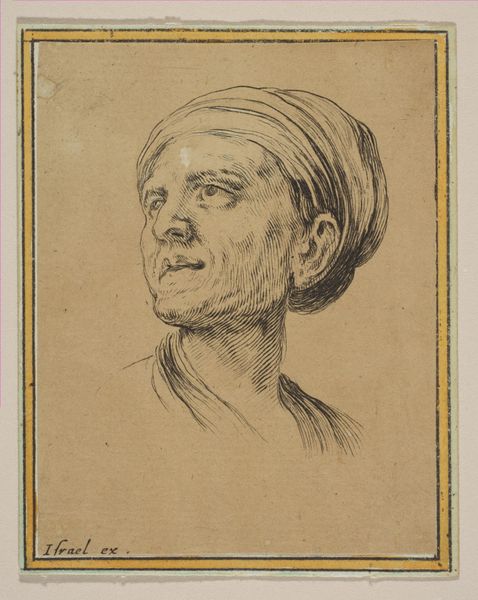
drawing, pencil
#
portrait
#
pencil drawn
#
drawing
#
facial expression drawing
#
light pencil work
#
pencil sketch
#
caricature
#
personal sketchbook
#
portrait reference
#
pencil drawing
#
pencil
#
portrait drawing
#
pencil work
#
realism
Dimensions: height 275 mm, width 219 mm
Copyright: Rijks Museum: Open Domain
Editor: This is "Head Study of a Mameluke" by Charles Parrocel, made sometime between 1698 and 1752. It's a pencil drawing, and I find it quite striking – the detail in the turban is really impressive. What stands out to you about this piece? Curator: What I notice is the labor evident in the work itself. Consider the accessibility of the materials. Pencil and paper allowed for preliminary sketches that enabled this circulation of images of "exotic" figures, reinforcing colonial power through the ease of mass production of similar works. Editor: So, you're focusing on the accessibility of the materials and how that impacts the message? Curator: Precisely. Pencil, unlike expensive oils, meant studies like these could be made by more people, circulating images and ideas broadly. What do you make of the sitter? Editor: Well, he’s identified as a Mameluke, so part of me wonders about the context in which this image was produced, and how this may further re-entrench stereotypes via production. Curator: Exactly! The means of production are rarely neutral. How do the repetitive lines create both light and shadow, constructing not just a portrait, but a social type? Are we seeing an individual or a representation intended for consumption? Editor: That's a great point. It makes me think about the commodification of images, then and now. Thank you! Curator: Of course! Looking closely at the means of production offers us tools to examine consumption in unexpected ways.
Comments
No comments
Be the first to comment and join the conversation on the ultimate creative platform.
